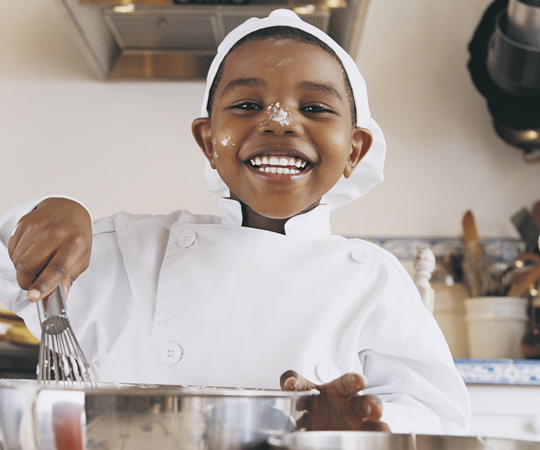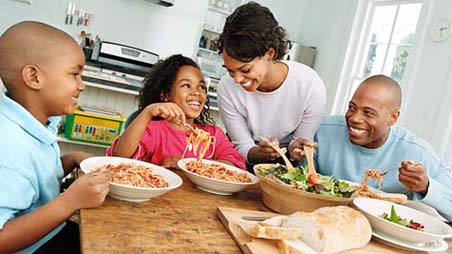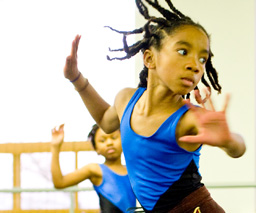Sleep Well, Be Well | Marie Reynolds

“Sleep is the underpinning of our entire well-being. For centuries people thought that sleep was a time of inactivity that the brain was resting. But all the new science proves that the opposite is true — that during sleep the brain is in a state of intense activity, which is necessary for us to fully recharge and be productive, creative and truly connect with ourselves and others during the day.” ~ Arianna Huffington, formerly of The Huffington Post and author of The Sleep Revolution: Transforming Your Life, One Night at a Time
Every year on the third Friday of March we honor the active, important process of Sleep on World Sleep Day. In 2018 the theme was Join the Sleep World, Preserve Your Rhythms to Enjoy Life, focused on the importance of circadian rhythms in healthy sleep.
What are circadian rhythms?
The word circadian originates with the word cycle. No doubt you’re familiar with the term menstrual cycle. Well our bodies have other cycles as well: rhythms in body temperature, hormone levels and how alert we are; these are circadian rhythms. They are produced by biological clocks within our bodies. Environmental factors such as sunlight, artificial light and the blue light from TV and electronic device screens can also affect them.
Following our bodies natural rhythms is important for our physical, mental and sleep health. Unfortunately, our modern, heavily scheduled, technologically crammed lifestyle is anything but natural. Even our children may go to bed at varying times depending on the time we are able to get them home, and how much homework or other activities are on their plates. The morning commute, and an early start to the school day mean having to get them up at the crack of dawn, often with a fight because the schedule has disrupted their circadian rhythm.
Creating a Sleep Schedule
A regular schedule, including having a set bedtime and wake-up time is important for overall health and sound sleep—one of the three pillars of good health, along with a balanced diet and healthy exercise. Sleep, like exercise and nutrition, is essential for good metabolic regulation in children. Lack of sleep or poor quality sleep is known to have a significant negative impact on health in the long and short term. There is evidence of a link between length of sleep and childhood obesity— most apparent in girls— due to the effect of day-to-day variability of sleep-wake timing on weight regulation. The sleep chart below outlines the average length of sleep needed at various ages and stages of life (Courtesy of http://www.sleepaidresource.com/sleep-chart.html ).
SLEEP CHART BY AGE |
||
| Age |
Total Sleep Needed |
Additional Notes |
| 1-4 Weeks | 15-16 Hours | Newborns are developing their internal biological clocks |
| 1-4 Months | 14-15 Hours | Regular sleeping patterns begin and longer night sleeping |
| 4-12 Months | 14-15 Hours | Important to establish regular sleeping patterns at this time |
| 1-3 Years | 12-14 Hours | Naps remain important to sleep health |
| 3-6 Years | 10-12 Hours | Naps will become shorter |
| 7-12 Years | 10-11 Hours | Bedtime gets later |
| 12-18 Years | 8-10 Hours | Teens may need more sleep |
| Adults | 7-8 Hours | Times will greatly vary |
Quality of sleep is just as crucial as length of sleep. Believe it or not, some of the most important work that your child’s brain can do for their intellectual, emotional and physical well-being takes place while your child is asleep! Breathing regularly during sleep is critical to maintaining well-being and health. One of the most common issues affecting children’s sleep is poor breathing due to issues such as enlarged adenoids, sleep apnea (the interruption of the breathing function during sleep), sinusitis, and even nasal allergies. If you think your child may be affected, consult your doctor for referral to an appropriate specialist.
Whatever the cause, poor quality sleep may have a negative effect on your child’s attention span, memory recall, and learning. Behaviors and emotions are also affected. For example, some children suffering from poor quality sleep show symptoms that mimic ADHD. Regular, quality and restorative sleep may just be the prescription for your child’s irritability, hyperactivity, moodiness, or anxiety.
The bottom line is that healthy sleep will improve children’s overall wellness and development. The World Sleep Society has created the 10 Commandments of Sleep Hygiene for Children [Ages birth to 12 years] (See below) The number one tip for good sleep health is establishing a nightly bedtime routine that could include:
BEDTIME ROUTINE
- Have a light snack
- Take a bath or have a warm shower
- Put on pajamas
- Brush teeth
- Read a bedtime story
- Say prayers
- Make sure the room is quiet and at a comfortable temperature
- Tuck child in bed
- Say goodnight and leave
Here are all ten of the 10 Commandments of Sleep Hygiene for Children:
10 Commandments of Sleep Hygiene for Children
- Go to bed at the same time every night, preferably before 9:00PM.
- Have an age-appropriate nap schedule.
- Establish a consistent bedtime routine.
- Make your child’s bedroom sleep conducive – cool, dark, and quiet.
- Encourage your child to fall asleep independently.
- Avoid bright light at bedtime and during the night, and increase light exposure in the morning.
- Avoid heavy meals and vigorous exercise close to bedtime.
- Keep all electronics, including televisions, computers, and cell phones, out of the bedroom and limit the use of electronics before bedtime.
- Avoid caffeine, including many sodas, coffee, and teas (as well as iced tea).
- Keep a regular daily schedule, including consistent mealtimes.
Setting schedules for children can be difficult. Please let us know how you manage a sleep schedule in your home, in the comments below.
References
Written by Marie Reynolds a Clinical Social Worker – Paediatric Psychotherapist who offers therapy for infants and young children with their parent(s).
Learn MoreKid Chefs – 6 Tips to Getting Children Involved in the Kitchen & Eating Right | Chenell Griffiths

Kids in the Kitchen!
Getting kids involved in the kitchen is one great way in which parents can encourage their kids to eat right; let them be Kid Chefs! Kids that are involved in the meal preparation process feel encouraged to eat the meal they have helped to cooked.
However, do bear in mind that parents need to lead by example; and as such, in an effort to encourage children to eat right, parents must also eat right. Thus, meals that are prepared together (parents and their kids) should be had together. Without further ado, here are 6 tips for parents on how to get their kids involved in the kitchen, and eventually eating right:
6 Tips To Encourage Your Kid Chefs
- Ensure that you are never in a rush when cooking with children. Always be patient; you do not want them to associate meal preparation with the feeling of anxiety.
- Demonstrate kitchen safety measures and good hygiene practices. See Kitchen Safety Rules for Kids.
- Children ages 3-5 can help with
- mashing, mixing, stirring, blending,
- cracking eggs,
- using a butter knife to cut soft foods and
- washing ingredients.
In addition, children in this age group can also help with measuring and pouring. Measuring and pouring is a great time to incorporate practicing to count.
4. Children ages 6-12 can help with:
- cooking simple starches such as rice and pasta
- cutting and peeling vegetables
- separating eggs
- chopping, dicing and mincing of ingredients and also
- preparing easy breakfast items such as scrambles eggs, cereal with milk and oats porridge.
5. Have children help with age appropriate cleanup:
- children ages 3-5 can help by wiping up spills on the counter; likewise,
- children ages 6-12 can help with the washing of dishes and utensils and sweeping.
6. Finally, let your kid chefs know that they have done a good job, and thank them for helping you in the kitchen.
Though cooking with your children can get quite messy, above all, it is important to focus on the bonding experience as well as the fact that you are positively impacting their health, both physically and mentally, for the rest of their lives.
Written by Chenell Griffiths, Nutrition Educator
Learn MoreCelebrating Literacy | Kellie-Anne Brown-Campbell

One of the age old phrases that most of us grew up hearing as young children is “Reading maketh the man”. It was drilled into our heads that to do anything meaningful, and succeed at school and life, literacy skills were critical! According to the Oxford Dictionary online, literacy is defined as “the ability to read and write”, and I would add, “The ability to read and write, at least at your age/grade levels”. It is very important to highlight that literacy is not just related to reading skills, but also covers one’s written expression and written language skills. Reading can be seen as a mode of communication, a way of communicating with the past, a way of reaching into the future. If we think about books, the plethora of books that have been written, one’s mind will be unable to fathom or comprehend the vast array of topics that are covered.
As we teach reading skills, I shall use this platform to highlight that it is equally important to improve and explicitly teach our children writing skills. Many times, persons may not have the power or opportunity to express themselves verbally, but the “power of the pen” cannot be denied. In our local context here in Jamaica, we have assessments of our children’s writing skills as early as Grade Three as part of the Grade Three Literacy and Numeracy Diagnostic Test. A component of the literacy assessment is Communication Task which usually requires students to write a letter on a particular topic, or they may be given pictures from which they will have to construct an organized and well-sequenced story.
International Literacy Day 2017 will be celebrated under the theme, “Literacy in a Digital World”. This theme is quite appropriate as the world is rapidly becoming more digitized. However, the importance of being able to communicate thoughts and ideas in writing (or in typing), will always be an important skill. As my parents used to say “if you don’t read you won’t be able to write well”. Again, we see the inseparable connection between reading and writing. Reading helps children to learn new words and vocabulary, how words are used in context, spelling, etc. Educators, especially those teaching language arts, find that children who are good readers, are also often good writers. It is highly recommended that parents encourage the development of writing skills alongside reading, especially as children progress to higher grades.
As the school year starts let us remember the importance of literacy skills and the fact that these skills need to be directly taught and reinforced, not just at school but also at home. Parents can encourage children to read and write more, and also model the behaviours that they want to see in their children. Some way that parents can help children develop their writing skills include:
- Have young children read material of interest, whether paperback or electronic, and encourage the drawing and simple labelling of pictures/drawings.
- As children get older and reading/spelling skills improve, encourage journal writing or the writing of very simple stories (one or two sentences), accompanied by pictures.
- Encourage reading out loud and the development of writing skills based on material read.
As we celebrate International Literacy Day, let us as parents and educators remember that young children will learn to read, but as they get older they read to learn. Reading can take our children places they may have never dreamed they could go and through reading they are able to build the skills necessary to develop writing skills. We have to be patient in teaching them writing skills. As you read together and write together, just think – You are helping your child to make strides to becoming a better reader, writer and to a larger extent a great communicator!
Written by: Kellie-Anne Brown-Campbell, Licensed Associate School Psychologist
Learn MoreLet’s Get Physical | Marie Reynolds
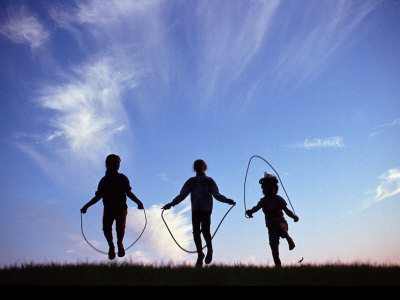
Children today spend less time engaging in outdoor play and physical activity, and a lot more time indoors in front of one screen or another, whether TV, computer, tablet, smartphone or video game. On a local TV children’s quiz show, the hobby most claimed by participants is “surfing the net.” As children’s physical activity and outdoor play have declined, there has been evidence of increased occurrence of mental health concerns such as anxiety, depression, ADHD and low self-esteem.
Nevertheless, both at home, and in school, children are punished for unacceptable behaviour by having their recess time cut or taken away. As significant exams approach, it is not uncommon for children’s extra-curricular activities and playtime to be significantly reduced or cut altogether so that they can focus on extra lessons and other preparation. However, have we ever considered that children and adolescent’s learning, memory, and focus, as well as mental health and emotional well- being might actually benefit from physical activity and outdoor play?
Aerobic exercise enhances children’s ability to concentrate, think and manage their impulses
All forms of aerobic exercise are helpful, whether running and climbing in outdoor play, more organised sports, P.E. classes, group games, or virtual exercise through the Wii. The more consistently over time children engage in these exercise activities, the more lasting the effects.
Aerobic exercise increases blood flow to the brain and stimulates hormones that regulate memory. Brains develop through children’s experiences, and because the area of the brain responsible for these functions (known as executive functions) continues to develop through to young adulthood, the brain is sensitive to the effects of aerobic exercise. Studies indicate that children and adolescents who engage in moderately intense aerobic exercise over time demonstrate improvement in all aspects of executive function including:
- Controlling behaviour, emotions and attention
- Holding and working with information in memory
- Thinking creatively and adapting to change
- Problem-solving and reasoning
All these functions are vital for both academic and social success.
Exercise enhances self-esteem and promotes positive mood
Through exercise children discover and develop their capabilities. This helps them feel competent and better about themselves. At the same time, exercise releases endorphins, hormones that trigger a positive feeling in the body. Youngsters experience joy in outdoor play or exercise. Not only can exercise help children or adolescents already experiencing depression or low self-esteem, but it is believed to protect against developing issues down the road.
Activities that combine physical exercise with other thinking or social activity have an even greater effect.
Besides aerobic exercise, activities such as classic martial arts, that incorporates character development and self control, or yoga, that combines physical activity with mindfulness, can be especially beneficial. Children’s group games that not only entail exercise, but also require the use of social skills for cooperation, conflict resolution and relationship building, are great activities for enhancing children’s mental health and development.
So, let’s think twice before cutting children’s physical activity as punishment or in favour of academics. Regular exercise or outdoor play may be just the thing they need to improve learning, build self-esteem, enhance creative problem solving, develop healthy management of their emotions and encourage positive socialising.
Written by: Marie Reynolds, Paediatric Psychotherapist
Learn MoreBack To School: 4 Tips to Get You Ready | Dr. Shauna Miller
It’s that time of year when we consult school lists and rush around trying to get everything into place for the coming year. While in the process of organizing all the material necessary for a successful year, it may be helpful to build habits and routines that can ensure long-lasting success. The following steps may seem simple but have proven to help children not only do well in school but have better social and emotional lives.

Imagine retrieved from https://thoughtcatalog.com/cehudspeth/2013/03/what-your-bedtime-says-about-you/
ONE: Establish good sleep routines
Good sleep is key. We all know how difficult it can be to function with limited sleep and this is no less true for children. In fact good quality sleep has been linked to better mental and physical health. We need to help our children benefit from adequate sleep even if they are afraid of missing out! Of course during the holidays many children have enjoyed long days and freedom over when to get to bed. Now that the school year looms, it may be useful to phase in earlier bedtimes. Each week set a bedtime that gets closer to the one used during the year to help youngsters to adjust to a schedule. Limit the use of electronics before bedtime and prohibit them from use in the bedroom as they can significantly delay the onset of sleep. Instead, establish relaxing routines right before bed with quieter activities such as reading, listening to quiet music, drawing or bath time.
TWO: Plan for healthy eating
Nutrition has been shown to be just as important as good sleep for academic and socioemotional success. Now is the time to think through what the meals for the school year might look like, especially in the mornings. Are mornings busy? Think about having pre-prepared options such as pre-made porridges, boiled eggs, sandwich fillings that can be quickly made ready in the morning. Fresh fruits should be accessible as quick snacks. Children often model the eating habits of their parents so a good way to develop an appetite for fruits and vegetables in your children, is to eat them consistently. It is very important for children to go to school with a good breakfast as they need those nutrients to properly engage in learning.
THREE: Develop a consistent work schedule
Homework time can sometimes range from a minor hassle to a full-scale war. If children have a set expected time that they have to work every day, it can ease some of the friction of homework time. Even now, during the summer it may be best to have a daily time of active learning to ease the transition back to school. Have a set time that children must engage in a learning task whether they have an assignment or not. Consistency is the key to success with children. Ideally homework time should be after a short break from school and before any T.V. or tablet time. Ensure that the assigned work or activity is completed before children are allowed to play. If you find that your child seems daunted by homework, try breaking tasks into chunks with very quick breaks after each e.g. do 5 problems or 2 questions or work for 15 minutes.
FOUR: Connect
Listening to our children is one of the most valuable steps to maintaining a positive, healthy relationship. As children get older it can seem harder to get them to talk. Spend time with them doing things that they enjoy and patiently wait for them to share their thoughts. As they speak freely about their lives, it is important to remain as neutral and positive as possible. If you begin to lecture or ask too many questions, children become reluctant to share. This does not mean you should not address concerns! But make careful judgments about what you need to probe and how you can engage in a productive discussion. We need to be able to hear what is going on in our children’s lives as they re-enter school and face their own challenges, successes and failures, and difficult decisions. We need to be able to understand their frustrations and hopes and detect early warning signs of problems. Making the time to connect with our children will pay off for years to come.
Written by Dr. Shauna Miller, School Psychologist
Learn MoreChildren & Violence: How can we help? | Marie Reynolds
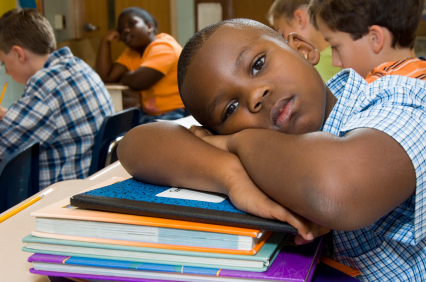 Children repeatedly exposed to violence, whether directly through community or domestic violence, or physical abuse, or virtually through film, TV and the news media, may show signs of trauma. Trauma is experienced when a person’s normal coping mechanisms are overwhelmed, leaving them feeling helpless, hopeless and unsafe. Because every person, including a child, is wired for survival, threat to safety activates brain mechanisms that are programmed to protect by fighting, fleeing or freezing. Normally, the brain returns to normal functioning once the threat is over. However, when that threat to safety is ongoing, such as in the case of a child living in a violent community or home, or repeatedly exposed to violence in the media, the brain may be in constant fight, flight or freeze mode, and the survival response may be easily triggered by seemingly harmless experiences, such as not having what they want, a parent talking loudly, or a sudden loud noise.
Children repeatedly exposed to violence, whether directly through community or domestic violence, or physical abuse, or virtually through film, TV and the news media, may show signs of trauma. Trauma is experienced when a person’s normal coping mechanisms are overwhelmed, leaving them feeling helpless, hopeless and unsafe. Because every person, including a child, is wired for survival, threat to safety activates brain mechanisms that are programmed to protect by fighting, fleeing or freezing. Normally, the brain returns to normal functioning once the threat is over. However, when that threat to safety is ongoing, such as in the case of a child living in a violent community or home, or repeatedly exposed to violence in the media, the brain may be in constant fight, flight or freeze mode, and the survival response may be easily triggered by seemingly harmless experiences, such as not having what they want, a parent talking loudly, or a sudden loud noise.
What does trauma look like in children?
Signs of trauma often look like disruptive behaviour, a child just being rude and defiant, or quiet and withdrawn. If you are seeing any of the following in your child or student, consider whether they may have experienced trauma, such as experience of or exposure to violence:
- Difficulty concentrating or paying attention
- Difficulty focusing eyes to read
- Inability to finish tasks
- Difficulty learning new information well
- Fidgety or unable to keep still
- On edge, or on guard even when in a safe environment
- Easily startled
- Can’t stay seated
- Compulsive talking
- Easily distracted
- Short tempered, always ready for a fight
- Aggression
- Defiance
- Inattentiveness
- Daydreaming
Some children, especially boys, act out their fear and anger by hitting bullying, teasing and engaging in dangerous activities. Others, particularly girls, turn their fear and anger inward, causing physical ailments such as frequent headaches or tummy aches, bedwetting, or showing signs of withdrawal, anxiety or depression.
Caregivers and teachers often respond to these behaviours with impatience, frustration, reprimand and punishment—all of which may be interpreted by the survival brain as threat, triggering even more of the problem behaviour. The challenge, too, is that many times the adults have also been exposed to the same violence or other trauma producing events, and are in fight, flight or freeze mode, too!
What can teachers and caregivers do?
First, parents and teachers need to be a “safe space”
for children who have experienced trauma and violence.
- Be calm and stay cool when dealing with challenging behaviours. Remember, many of these behaviours are ways in which their brains are trying to help them survive. Reacting rather than responding will appear to be yet another threat from which the brain will want to protect the child.
- Be aware of your own responses. Before reacting to the behaviours, take a moment to check yourself. Take a step back, plant your feet solidly on the ground, and take a few deep breaths through your nose into your belly, and slowly out through your mouth. Wait until you are in a calm state before responding in a soothing voice. If necessary, take a personal time out to engage in a brief calming activity—whatever works for you.
- Provide comfort and a listening ear. Give children space to talk freely about their feelings, worries or fears. After they share, use your own words to repeat what you heard them say. Pay attention to body language, tone of voice and facial expressions, too.
Protect children from exposure to violence, as much as possible
- Minimise children’s exposure to media violence. Avoid discussing violent news etc. in the presence of children, especially young children. Television news can be particularly graphic, so restrict children from viewing. Filter the news and limit to newspaper or radio.
- Monitor children’s TV and movie viewing so as to limit repeated exposure to scenes of violence and aggression. Pay attention to ratings.
- Pay heed to video games ratings, as well. Stick to those rated for children.
- Avoid fighting and arguing in front of children. Even babies will be negatively impacted by fighting and marital conflict in the home. Seek counselling if you are having frequent and intense conflict with your spouse or partner.
Here are some useful exercises and activities that can help children manage the effects of violence exposure:
- Let children draw their worries or fears, and then draw the opposite. Let them talk about what they drew.
- Lead students in focused or relaxation breathing exercises and meditations, e.g. Heart and Belly Breathing,or Popcorn-Candle Breathing described below.
- Have children draw about a time they felt good, happy, and safe recently or before the violence. Then have them study their artwork, close their eyes and notice where in their bodies they can feel the goodness, happiness, etc, Let them discuss the difference between the pleasant feelings and the unpleasant ones. Point out how they were able to feel the pleasant feelings just by thinking about that happy time. Let them know they have the super power to feel those pleasant feelings any time they want, just by thinking about their happy time.
- Similarly, you can have children draw a picture of their safe place. This can be real or imagined, Have them talk about their drawing, and describe what it feels like, and smells like. Let them know that they can always go to their safe place by looking at their picture or imagining it in their minds.
- Physical activities can help to ground children in the present moment, rather than dwelling in the past, violent event(s). Activities like dancing with stomping movements or drumming can be very helpful for grounding children. Ask them to notice how the ground or drumming surface feels as they dance or drum. Follow up with a moment of quiet breathing.
- When children are experiencing difficult emotions, have them choose a crayon that they think is a good colour for that feelings, and then scribble or rapidly colour the feeling out onto paper, filling up the paper as they release the feeling. When they are finished, they can talk with you about what it was like doing it.
- Let children engage in physical activities such as running and jumping to help release some of that survival energy.
- Use bubble blowing to practice deep breathing. Blowing giant bubbles is a great way to practice the deep, slow exhales that activate the calming (parasympathetic) nervous system. Besides which, bubble blowing is just fun!
It’s good to follow up release exercises with grounding and or relaxation exercises. This will also help children to learn how to regulate their energy and emotions.
Heart and Belly Breathing
- Ask children, “Place one hand on your belly and the other hand on your heart.”
- Ask them to turn on their superpowers of noticing, just like a detective or scientist.
- Next, ask them to see if they can notice their breathing, and if they can notice what happens to the hand on their belly when they breathe in, and what happens when they breathe out.
- Let them keep noticing for about a minute. Tell them that if they start to think about or notice something else, that’s okay. If that happens, they can just go back to noticing the hand on their belly again.
- For older children, you can next ask them to see if they can notice when the breath goes up behind the hand on their heart. Have them notice how the air moves in through the nose, into their belly, and up behind the hand on their heart as they breathe in, and then down from the heart area to the belly and out through the nose as they breathe out. Keep noticing from 1 to 3 minutes.
Popcorn Candle Breathing
Say to the children:
“Imagine you have some popcorn (or pizza or fried chicken) in your right hand, and a birthday cake with candles in your left hand. We’re going to smell the popcorn and then blow out the candles. First, let me show you how.”
Demonstrate by inhaling the “popcorn” in your right hand deeply through your nose, and then blowing out the “candles” in your left hand with a long out breath through your mouth. It is best if the exhale (blowing out) takes about twice as long as the inhale (smelling the popcorn).
Have the children do it with you five (5) times.
Written by Marie Reynolds, Paediatric Psychotherapist & Clinical Social Worker
Learn MoreThe Importance of Reading With Your Child | Kellie-Anne Brown-Campbell
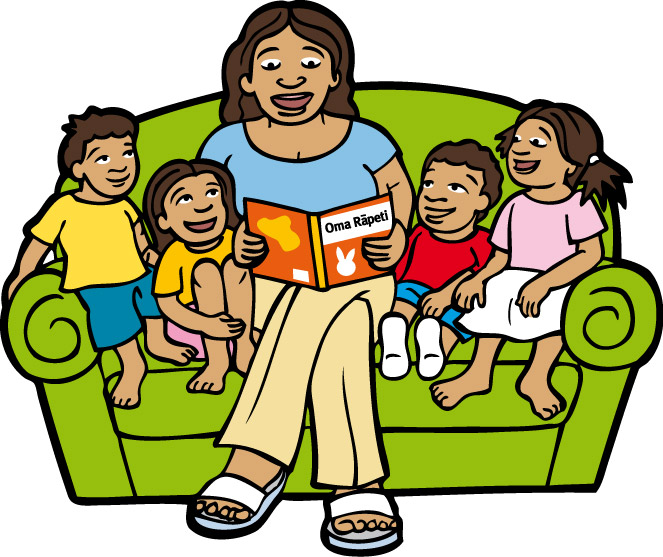
The literature is littered with numerous reports on the fact that parent involvement is a number one factor in predicting early literacy success and later academic achievement. As parents, we often pass off the importance of our roles in the development of our children’s academic skills, especially reading, onto school. Some comments which we may hear are: Why should I read to my child? They do enough of that at school! I am not a teacher! On the contrary, as a parent, you are your child’s NUMBER ONE TEACHER! Children need their parents to act as models through daily reading practice in an effort to successfully navigate through early literacy skills and build on later skills. In this article, I would like to highlight three main reasons why it is important and in fact valuable, to read with and to your children!
- Reading exposes your child to rich language and diverse content. When reading books with your children, they are exposed to a wide vocabulary and more complex and diverse ways of expression, rather than the mundane ways of communication they may experience on a daily basis. Therefore, books allow parents to expand the language environment as they become their children’s first and most important teachers. Parents are therefore able to immerse their children in rich and varied language, sparking interest in information, building imagination and even developing the cornerstones of interest in topics such as science and math. It is therefore a great idea to expose children to not just fictional material, but also non-fictional books.
- Reading with your children helps prepare their minds to succeed in school. The benefits of shared reading know no age limits. Babies are soothed by their parents’ voices; school children reading to parents can show their new accomplishments or seek their parents’ help and books for toddlers can help children get ready to learn to read. Children are used to listening to language for its meaning, but reading demands that they also pay attention to the sounds of language, helping to build phoneme and phonological awareness skills. When reading to your children ask them about rhyming words, homophones, similar syllables, etc. This helps to build a good foundation in language.
- Reading with your child can build family ties and allow for bonding.Reading with your child is most beneficial when parents take it as an opportunity to converse with their children through topics and ideas that come up in the books. Reading together is family time; it is fun time, cuddle time, a time to share your passions, perspective, and your values but also a time to listen. It creates a time for children to express themselves as well as an opportunity for parents to show their willingness to listen. Try it today! Build a conversation around a book and experience the joy of having a conversation with your child!
Written by Kellie-Anne Brown-Campbell, Licensed Associate School Psychologist
Learn MoreBACK TO SCHOOL THE S.M.A.R.T. WAY

- image from http://www.yukonwellness.ca
Back to school is here! I am encouraging kids at all levels to set S.M.A.R.T. Goals for the up-coming academic term! You can get the results you want as long as you keep your mind’s focus on what you want to achieve.Make your academic goals as specific as possible, also make them measurable (determine for yourself how you will know when you’ve achieved EXACTLY what you want!).
Importantly, write down your goal in a way that makes it ‘as if…NOW’. Don’t phrase your goals as an arbitrary wishful thought that may or may not be achieved at some eventual point in the future. Instead, make it real and as if it’s right now. You can do that by filling it with strong visuals, sounds and feelings that make the experience as though it’s happening at this very moment for you!
You do need to make sure that whatever goals you set are realistic and can be achieved in the time frame you set and with the resources you have available to you. Finally, ensure that you anchor whatever goal you make in a timeline with a specific time attached for obtaining your goal. So let’s try out an example of setting a S.M.A.R.T. academic goal:
“It is December 2014 and I have just received my end of term report from the office, I feel amazing because I have obtained an average of 90% on my report. (You may go ahead and put in specific scores for specific subject areas). I can hear my parents’ congratulations about the great job that I have done and I feel satisfied with my performance. This feels amazing!”
When we make S.M.A.R.T goals and position them at a concrete point in our future we give our minds something specific to focus on and because of the strong sensory energies (visuals, sounds, feelings) that we associate with the goal, we unconsciously are mobilised to do things that are guaranteed to get us what we want.
Just remember….where you put your focus changes EVERYTHING! Have an amazing academic year from Caribbean Tots to Teens!
Matthew McKenzie is a Masters level Clinical Psychologist at Caribbean Tots to Teens. He can be reached at mathhew.mckenzie@caribtots2teens.com
Learn MoreGirls Day
These are the things that children remember most from their days in school. Great job! Girls (and boys) celebrate your potential! Di you think “Girls day” makes a difference for female students?
Learn More


